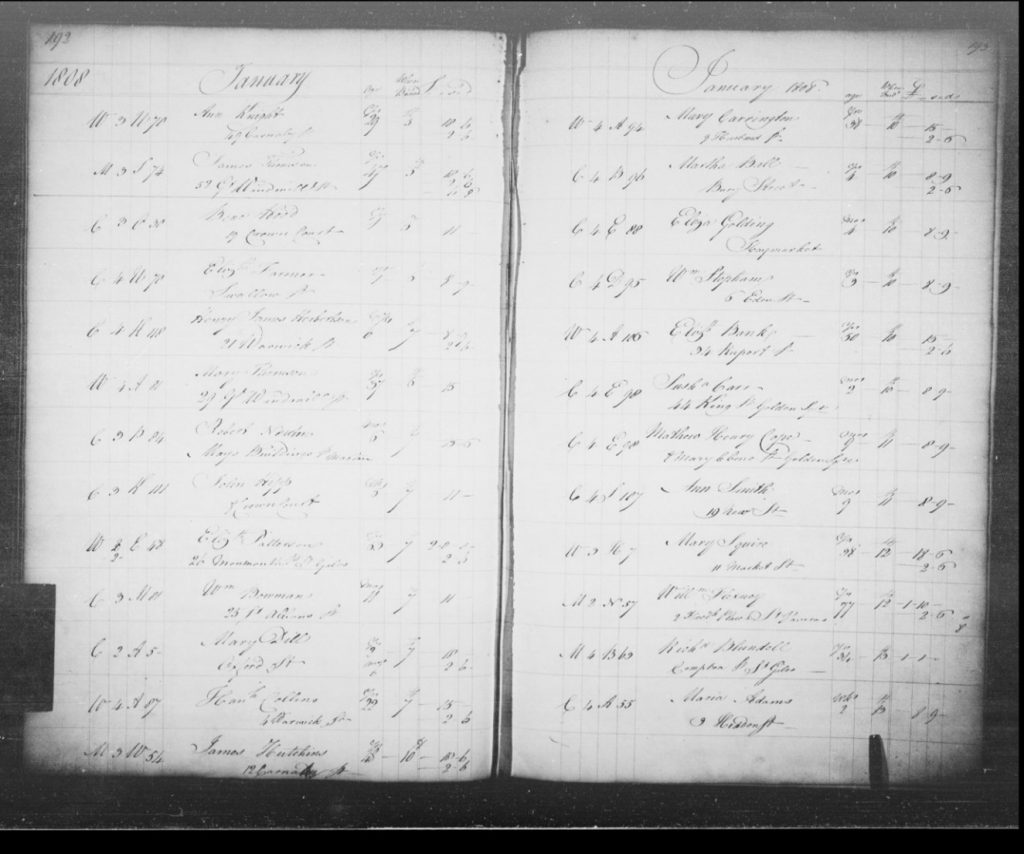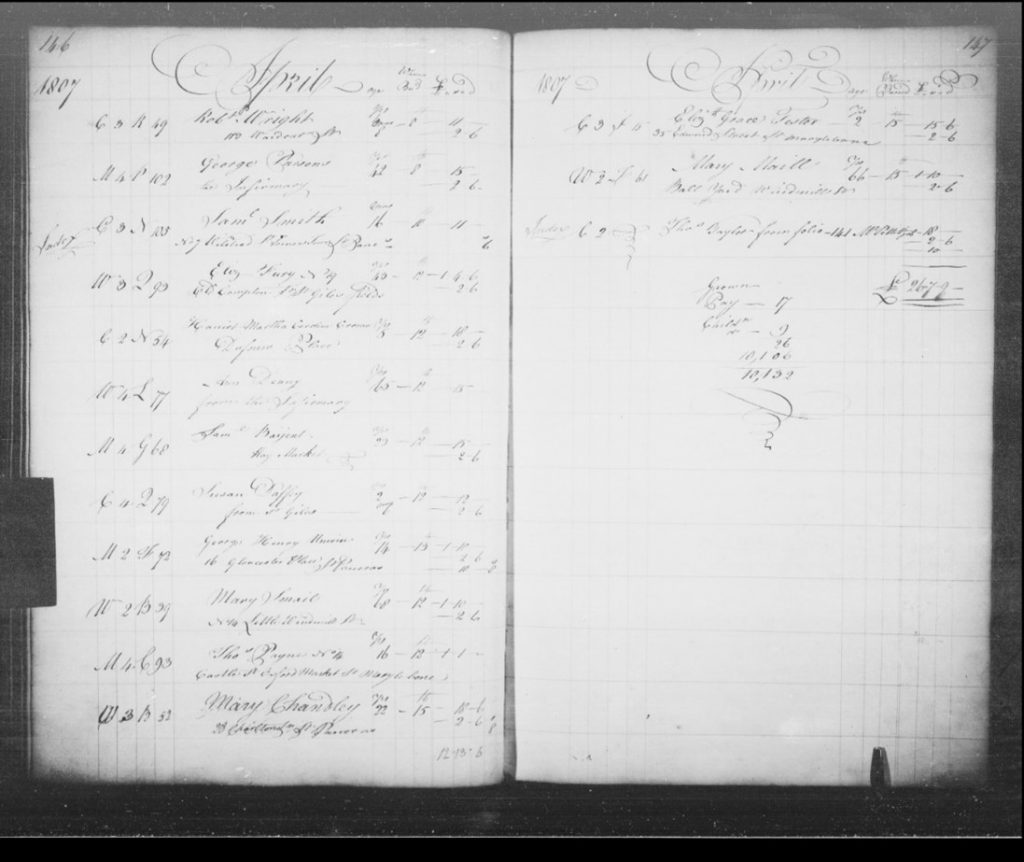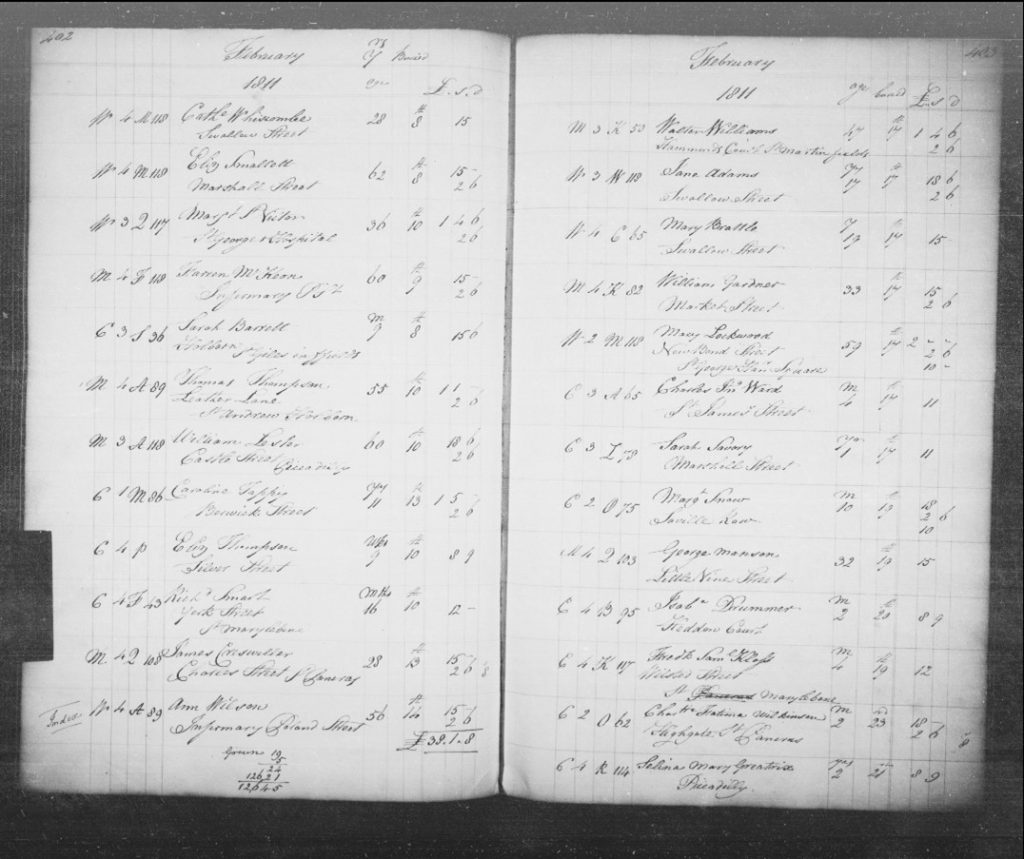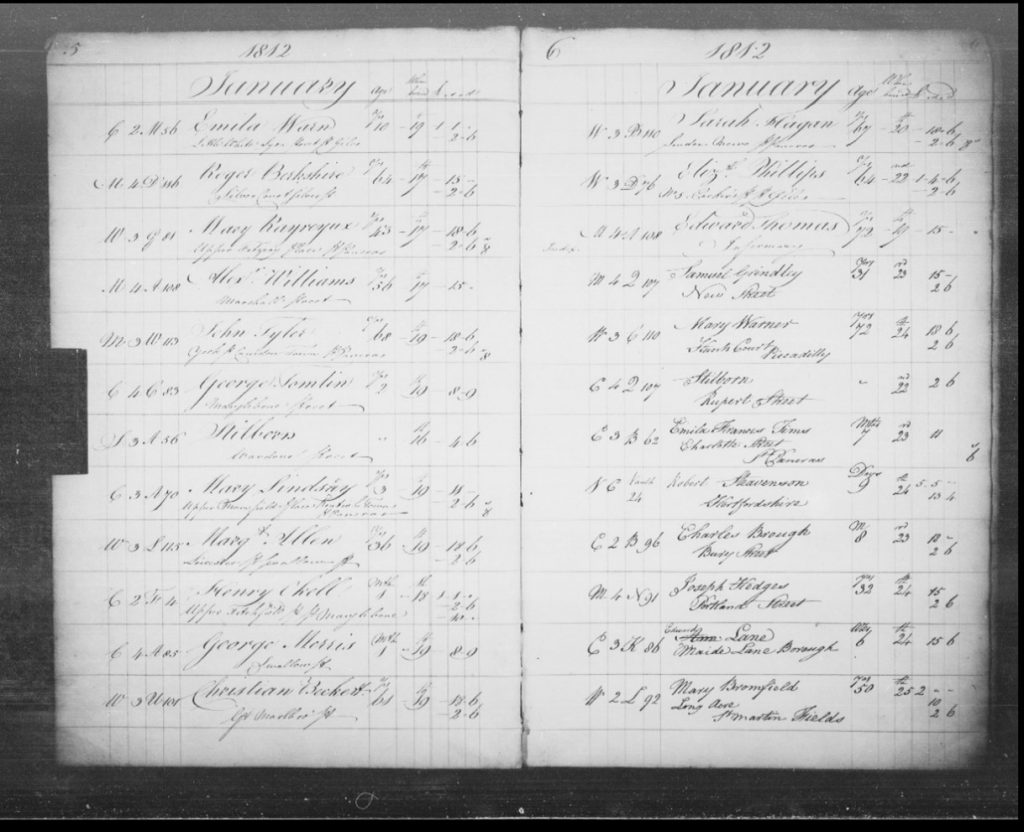A spotlight on the mysterious funerary clerks of St James’s Burial Ground
We’re working hard with volunteers to learn about the 18th and 19th century Londoners buried in St James’s Burial Ground. This project is part of the HS2 scheme.
We’re finding out these Londoners’ names, ages and where they were buried. But we would never have this information without a group of people whose identities will be very difficult to reveal – the funerary clerks.
Clerks were professional record keepers and would have spent their whole career on work like this. The burial ground operated for 63 years, so many different clerks worked there throughout the decades, carefully noting down tens of thousands of burial records using the famous Copperplate style handwriting.
Over 100 years after these clerks last put pen to paper, we’ve moved their records online to the Citizen Science platform, the Zooniverse. We’re beginning to understand just how much they can reveal.
Our Zooniverse volunteers who have spent a long time transcribing the records may have noticed the different styles of handwriting – which hint at the different clerks who wrote these records.
We can see the arrival of a new clerk from one page to another, just based on the handwriting.
 There were some clerks obsessed with spirals and swooshes…
There were some clerks obsessed with spirals and swooshes…

And then in 1811, a very neat clerk took over.
 1812 saw yet another different type of handwriting (and therefore another clerk).
1812 saw yet another different type of handwriting (and therefore another clerk).
 Seeing so many different styles emphasises that all these details were recorded by actual people – the names and numbers didn’t just appear on the page. Although we have the names and details of thousands of people buried in St James’s Burial Grounds, these clerks didn’t get to sign their name. All they’ve left behind here is their work.
Seeing so many different styles emphasises that all these details were recorded by actual people – the names and numbers didn’t just appear on the page. Although we have the names and details of thousands of people buried in St James’s Burial Grounds, these clerks didn’t get to sign their name. All they’ve left behind here is their work.
Behind the scenes
After working through thousands and thousands of pages our volunteers can start to spot little stories which tell us about how clerks worked at St James’s Burial Grounds.
One surprising example is the entry recording the burial of Bridget Byrne ‘aged 1 week’. All her details are scribbled out and the words ‘Child not dead’ have been added.
 This isn’t the case of someone coming back to life, but something much sadder. Bridget’s mother, Sarah, died of childbirth and Bridget wasn’t expected to survive. The details of Sarah and Bridget were written down, until on the day of the funeral it was clear Bridget was still alive and well.
This isn’t the case of someone coming back to life, but something much sadder. Bridget’s mother, Sarah, died of childbirth and Bridget wasn’t expected to survive. The details of Sarah and Bridget were written down, until on the day of the funeral it was clear Bridget was still alive and well.
This story tells us that some of the burial records were written in advance of the actual burial. Must have been an unusual week for that clerk!
Still more mysteries…
This is not the only mystery that can tell us about how the burial grounds worked behind these records. A couple of our volunteers noticed a reference symbol appearing next to certain entries.
 This reference symbol is originally Chinese, Korean and Japanese, but was used historically like an asterisk. We have not worked out what the symbol is supposed to be, but we do have a theory.
This reference symbol is originally Chinese, Korean and Japanese, but was used historically like an asterisk. We have not worked out what the symbol is supposed to be, but we do have a theory.
It may be that because some entries were written in advance, if burials happened after the entries were written up then they couldn’t be slotted back in. They were therefore all added at the end of the page with the reference symbol.
What do you think this symbol tells us about how clerks kept their records here?
 Find out more
Find out more
- Get involved by getting burial records online on The Zooniverse. Whether you have 20 minutes or 20 evenings spare, every little helps!
- Sign up to our newsletter for the latest updates and discoveries from this project
- If you’re already a volunteer, let us know more about your experience in our short volunteer survey. This will help us improve your volunteer experience.
0 Comments
Leave A Comment